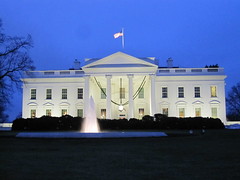| 13223841197 | antithesis | the opposition or contrast of ideas; the direct opposite |  | 0 |
| 13223863833 | litotes | A form of understatement that involves making an affirmative point by denying its opposite. Litote is the opposite of a hyperbole. |  | 1 |
| 13223957207 | metonymy | A term from the Greek meaning "changed label" or "substitute name," a figure of speech in which the name of one object is substituted for that of another closely associated with it. For example: instead of the President people say the White House |  | 2 |
| 13223982851 | Onomatopoeia | A figure of speech in which natural sounds are imitated in the sounds of words. |  | 3 |
| 13224012665 | oxymoron | From the Greek for "pointedly foolish," an oxymoron is a figure of speech wherein the author groups apparently contradictory terms to suggest a paradox. |  | 4 |
| 13224053629 | parallelism | Also referred to as parallel construction or parallel structure, it refers to the grammatical or rhetorical framing of words, phrases, sentences, or paragraphs to give structural similarity. This can involve, repetition of a grammatical element such as a preposition or verbal phrase. For example, "She likes cooking, jogging, and reading." | 5 | |
| 13224068470 | anaphora | A sub-type of parallelism, when the exact repetition of words or phrases at the beginning of successive lines or sentences. |  | 6 |
| 13224099022 | rhetorical modes | This flexible term describes the variety, the conventions, and the purposes of the major kinds of writing. |  | 7 |
| 13230281562 | syllogism | From the Greek for "reckoning together," a syllogism (or syllogistic reasoning or syllogistic logic) is a deductive system of formal logic that presents two premises (the first one called "major" and the second called "minor") that inevitably lead to a sound conclusion. |  | 8 |
| 13230284658 | synecdoche | a figure of speech in which a part is made to represent the whole or, occasionally, the whole is used to represent a part For example: calling violins, violas, and guitars in an orchestra the strings | 9 | |
| 13268335214 | exposition | to explain and analyze information by presenting an idea, relevant evidence, and appropriate discussion For example, writing an essay describing what tools the author uses in his/her writing on the AP Exam | 10 | |
| 13268339502 | argumentation | is to prove the validity of an idea, or point of view, by presenting sound reasoning, discussion, and argument that thoroughly convince the reader For example, saying cheese is the best food in the world by arguing that people like cheese more than broccoli |  | 11 |
| 13268350818 | description | to recreate, invent, or visually present a person, place, event or action so that the reader can picture that being described |  | 12 |
| 13268365157 | narration | is to tell a story or narrate an event or series of events |  | 13 |
AP Prep Vocab 1 Flashcards
Primary tabs
Need Help?
We hope your visit has been a productive one. If you're having any problems, or would like to give some feedback, we'd love to hear from you.
For general help, questions, and suggestions, try our dedicated support forums.
If you need to contact the Course-Notes.Org web experience team, please use our contact form.
Need Notes?
While we strive to provide the most comprehensive notes for as many high school textbooks as possible, there are certainly going to be some that we miss. Drop us a note and let us know which textbooks you need. Be sure to include which edition of the textbook you are using! If we see enough demand, we'll do whatever we can to get those notes up on the site for you!

